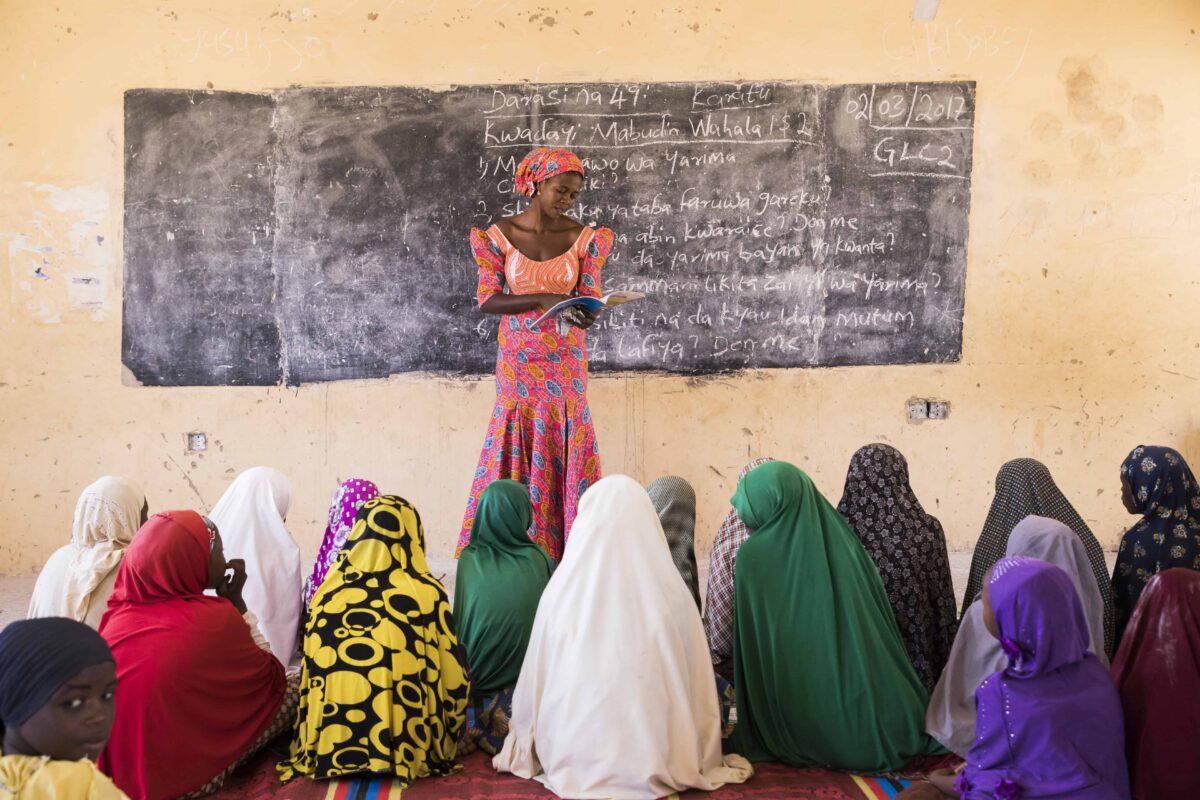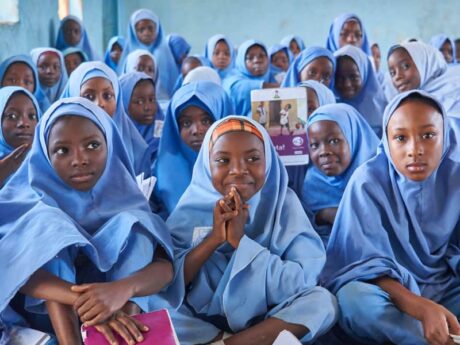A violent insurgency has wreaked havoc on parts of Nigeria, forcing some 2.2 million people from their homes—one of the largest concentrations of internally displaced persons in Africa. Of that total, approximately 1 million are school-aged children and youth who have been set adrift inside the country, ripped from their communities and their schools.
With the magnitude of the situation in Northeastern Nigeria, the U.S. Agency for International Development, along with state officials and nongovernmental organizations, stepped in with the Education Crisis Response program. The implementation was led by Creative Associates International.
Launched in October 2014, the three-year Nigeria Education Crisis Response program expanded access to quality learning opportunities for displaced, out-of-school children and youth ages 6 to 17. It focused on Adamawa, Bauchi, Borno, Gombe and Yobe states.
In partnership with the International Rescue Committee and more than 30 Nigerian organizations, the project also engaged traditional and religious leaders to provide safe, accessible locations for classes, to increase community support for the learners and to ensure sustainability of the activities.
Open to children of all ethnicities and religions, the program created 1,241 non-formal learning centers, located in churches, mosques, Qur’anic schools and other locations.
Using a proven curriculum, the displaced children received basic education, with an emphasis on math and literacy. In addition, the centers provided vital psychological and social services to the often traumatized pupils—many of whom had witnessed horrendous acts of violence.
Learn more about one girl’s survival and rebound by clicking here to read the story and watch the video.
In each of the non-formal learning centers, the Nigeria Education Crisis Response program improved the quality of teaching and learning materials. Class sizes were limited to ensure greater attention for the students, particularly since some may have been absent from formal schooling for up to two years.
Classroom teachers—also called “facilitators”—were selected from the communities where the internally displaced children currently reside. In preparation for the unique challenges facing the students and educators, teachers were put through a five-day training course to create a friendly and welcoming learning environment for the displaced children, incorporating group activities and recreation (a break from the usually more formal lecture-type settings of most Nigerian classrooms).
To learn more about these facilitators, please click here to see this story and video.
For older students, the Education Crisis Response program incorporated additional classes to provide skills that they may use to generate much-needed income that can be used to support their families.



